428. The Chinese with their wooden
clappers may have had a system similar to what we
just have discussed:
... In
China, every year about the beginning of April, certain
officials called Sz'hüen used of old to go about
the country armed with wooden clappers. Their business
was to summon the people and command them to put out
every fire. This was the beginning of the season called
Han-shih-tsieh, or 'eating of cold food'. For
three days all household fires remained extinct as a
preparation for the solemn renewal of the fire, which
took place on the fifth or sixth day after the winter
solstice [Sic!] ...
Supposing also they counted to April 8
(464 = 16 * 29), then there could have been 3 days of cold food
from for instance day 461 (April 5, 95). And to day 355 (winter solstice) +
5 = 360 there would have been 464 - 360 = 104 (= 8 * 58
- 8 * 45) days. 360 - 282
(Spica) = 78 days. These numbers can be found in the tresses
of Pachamama:
|
Counting the tresses from right to left: |
|
1 |
26 |
78 |
1 |
29 |
90 |
|
2 |
26 |
2 |
30 |
|
3 |
26 |
3 |
31 |
|
4 |
25 |
104 |
4 |
34 |
124 |
|
5 |
26 |
5 |
31 |
|
6 |
27 |
6 |
30 |
|
7 |
26 |
7 |
29 |
|
Total = 396 = 182 + 214 |
|
 |
Looking for a star positioned around 78
right ascension days after Spica we will find 78 Pegasi
(359.5). This is where the Woman in Chains (Andromeda) had her left
hand stopped from moving:
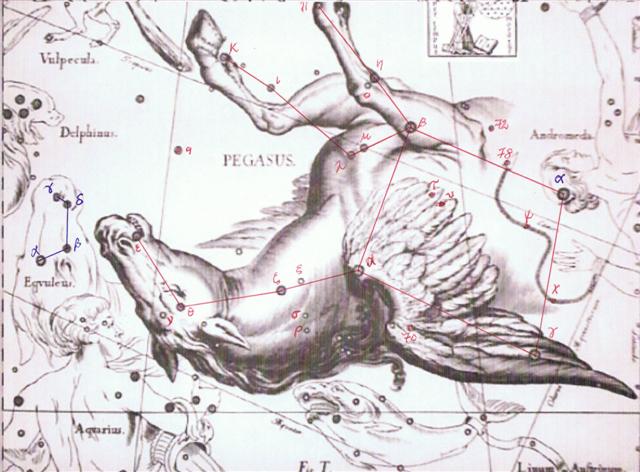
*359.5 (78 Pegasi) + *104 (8 * 13) = *463.5 =
*365.25 + *98.25 = April 8 (98) + 80 = 178 (June 27) = 6
* 29½ + 1. As visualized in Ga5-1 for the right fettered
hand of Andromeda (Manus Catenata) at March 14 (→
π) a week before 0h:

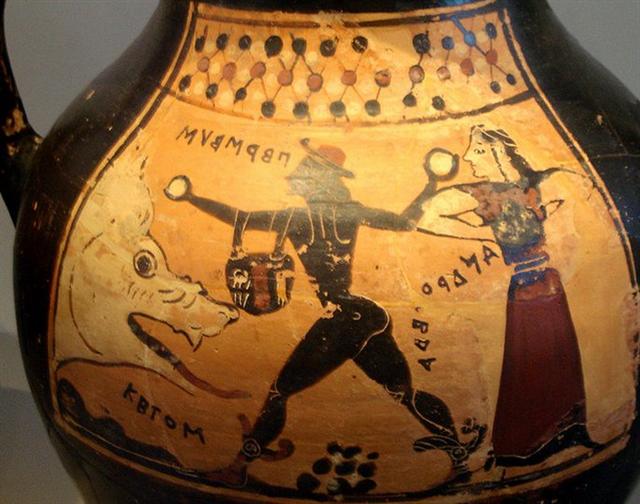
But let's begin at JUNE 1:
|
JUNE 1 (178 - 26) |
2 (336 - 183) |
3 (154) |
4 (*85) |
5 |
6 |
|
JULY 28 |
29 (7 * 30) |
30
(211 = 275 - 64) |
31 (212 = 155 + 57) |
AUG 1 |
2 (214 = 237 - 23) |
 |
 |
 |
 |
 |
 |
|
*Ca14-12 |
*Ca14-13 |
*Ca14-14 |
*Ca14-15 (378 → Saturn) |
*Ca14-16 |
*Ca14-17 |
|
te kihikihi |
o te henua - kua haga
hia |
kua pua |
te vero |
te henua |
kiore - te henua |
|
CLOSE TO THE SUN: |
|
no star listed (193)
*152 = *178 - *26 |
κ
Crucis (194.4),
ψ
Virginis (194.5),
μ
Crucis,
λ
Crucis (194.6),
ALIOTH (Fat Tail) =
ε
Ursae Majoris,
ι
Oct.
(194.8)
*153 = *194.4 - *41.4 |
MINELAUVA =
δ
Virginis
(195.1),
COR CAROLI =
α
Canum Ven.
(195.3) |
δ
Muscae (196.5) ,
VINDEMIATRIX (Grape Gatherer) =
ε
Virginis
(196.8)
*85 + *68 = *155 |
13h (197.8)
ξ¹ Centauri (197.1), ξ² Centauri (197.9 |
APAMI-ATSA (Child of Waters) =
θ
Virginis,
ψ
Hydrae (198.5),
DIADEM =
α
Com. Ber.
(198.9) |
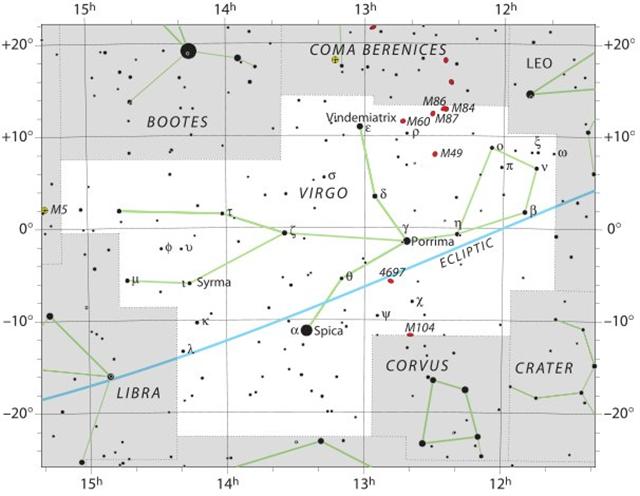 |
|
Sept 30 |
Oct 1 |
2 (275 = 92 + 183) |
3 |
4 |
5 |
|
Hora Iti 20 |
"Aug
21
(233) |
22 (275 - 41) |
23 |
24
(8 * 29½) |
25 |
|
PAPA O PEA |
AHU AKAPU |
|
... He (i.e., Ira) said, 'Let's
go! We shall go to Papa O Pea'.
They all got up and moved on. On the
twentieth day of the month of August
('Hora Iti') they went to Papa
O Pea. They all went and came to
Papa O Pea, looked around in Papa
O Pea, and gave the name 'Papa O
Pea A Hau Maka'. They stayed five
days in Papa O Pea ...
Pea.
(Also peapea): To go away with
bits of food or mud sticking to one's
face or garments. Vanaga. Peaha,
perhaps ... maybe, chance, doubtful;
reoreo peaha ... Ma.: pea,
perhaps. Peapea, an erasure ...
hakapeapea ... Peau, to
sweep all away. Ma.: peau, to be
turned away. Churchill. Peau, a
wave (Sa., To., Fu., Fotuna, Niuē, Mq.,
Nuguria); Mgv.: peau, peahu,
id.
Churchill 2.
... But in the fullness of time an
obscure instinct led the eldest of them
towards the anthill which had been
occupied by the Nummo. He wore on his
head a head-dress and to protect him
from the sun, the wooden bowl he used
for his food. He put his two feet into
the opening of the anthill, that is of
the earth's womb, and sank in slowly as
if for a parturition a tergo. The
whole of him thus entered into the
earth, and his head itself disappeared.
But he left on the ground, as evidence
of his passage into that world, the bowl
which had caught on the edges of the
opening. All that remained on the
anthill was the round wooden bowl, still
bearing traces of the food and the
finger-prints of its vanished owner,
symbol of his body and of his human
nature, as, in the animal world, is the
skin which a reptile has shed
...
They made camp and rested at Ahu
Akapu for two days ... |
|
CLOSE TO THE FULL MOON: |
|
March 30 |
31
(90 = 80 + 10) |
April 1 (*377) |
2 |
3
(459 = 93 + 366) |
4 (94) |
|
To throw,
to hurl (a lance, a spear). This word
was also used with the particle kua
preposed: koía kua vero i te matá,
he is the one who threw the obsidian
[weapon]. Verovero, to throw, to
hurl repeatedly, quickly (iterative of
vero). Vanaga. 1. Arrow, dart,
harpoon, lance, spear, nail, to
lacerate, to transpierce (veo). P
Mgv.: vero, to dart, to throw a
lance, the tail; verovero, ray,
beam, tentacle. Mq.: veó, dart,
lance, harpoon, tail, horn. Ta.: vero,
dart, lance. 2. To turn over face down.
3. Ta.: verovero, to twinkle like
the stars. Ha.: welowelo, the
light of a firebrand thrown into the
air. 4. Mq.: veo, tenth month
of the lunar year. Ha.: welo,
a month (about April). Churchill.
Sa.: velo, to cast a spear or
dart, to spear. To.: velo, to
dart. Fu.: velo, velosi,
to lance. Uvea: velo, to cast;
impulse, incitement. Niuē:
velo,
to throw a spear or dart. Ma.:
wero,
to stab, to pierce, to spear. Ta.:
vero,
to dart or throw a spear. Mg.:
vero,
to pierce, to lance. Mgv.:
vero,
to lance, to throw a spear. Mq.:
veo,
to lance, to throw a spear. Churchill 2.
WELO, v. Haw., to
float or stream in the wind; to flutter
or shake in the wind, s. the
setting of the sun, or the appearance of
it floating on the ocean; welo-welo,
colours or cloth streaming in the wind,
a tail, as of a kite, light streaming
from a brand of fire thrown into the air
in the dark; hoku-welo-welo, a
comet, a meteor; ko-welo, to drag
behind, as the trail of a garment, to
stream, as a flag or pennant. Sam.,
Tong., welo, to dart, cast a
spear of dart. Tah., wero, to
dart, throw a spear; a storm, tempest,
fig. great rage; wero-wero, to
twinkle, as the stars. Marqu., weo,
a tail. Mangar., wero, a lance,
spear. Greek, βαλλω,
εβαλον,
to throw, cast, hurl, of missiles, throw
out, let fall, push forward;
βελος,
a missile, a dart; βελεμνον,
id., βολη,
a throw, a stroke; βολος,
anything thrown, missile, javelin, a
cast of the dice.
Sanskr., pal,
to go, to move. To this Benfey refers
the Lat. pello,
Greek παλλω,
O. H. Germ.
fallan,
A.-Sax. feallan.
Liddell and Scott are silent on these
connections. (Fornander)
... A vestige of the practice of putting
the king to death at the end of a year's
reign appears to have survived in the
festival called Macahity, which
used to be celebrated in Hawaii during
the last month of the year. About a
hundred years ago a Russian voyager
described the custom as follows: 'The
taboo Macahity is not unlike to
our festival of Christmas. It continues
a whole month, during which the people
amuse themselves with dances, plays, and
sham-fights of every kind. The king must
open this festival wherever he is. On
this occasion his majesty dresses
himself in his richest cloak and helmet,
and is paddled in a canoe along the
shore, followed sometimes by many of his
subjects. He embarks early, and must
finish his excursion at sunrise. The
strongest and most expert of the
warriors is chosen to receive him on his
landing. The warrior watches the canoe
along the beach; and as soon as the king
lands, and has thrown off his cloak, he
darts his spear at him, from a distance
of about thirty paces, and the king must
either catch the spear in his hand, or
suffer from it: there is no jesting in
the business. Having caught it, he
carries it under his arm, with the sharp
end downwards, into the temple or
heavoo. On his entrance, the
assembled multitude begin their
sham-fights, and immediately the air is
obscured by clouds of spears, made for
the occasion with blunted ends.
Hamamea
(the king) has been frequently advised
to abolish this ridiculous ceremony, in
which he risks his life every year; but
to no effect. His answer always is, that
he is as able to catch a spear as any
one on the island is to throw it at him.
During the Macahity, all
punishments are remitted throughout the
country; and no person can leave the
place in which he commences these
holidays, let the affair be ever so
important ... |
|
"Febr 17 |
18 (49 = 90
- 41) |
19
(*336) |
20 |
21
(418 = 459 - 41) |
22 |
|
ξ
Phoenicis (9.0),
ρ
Tucanae (9.1),
DENEB KAITOS (Tail of the Sea Beast) =
β
Ceti,
η
Phoenicis (9.4),
AL NITHĀM (String of Pearls) =
φ¹
Ceti
(9.6)
*334 = *375.4 - *41.4 |
ACHIRD (Woman with Luminous Rays) =
η
Cassiopeiae
(10.7) |
Legs-15 (Wolf)
ν
Andromedae (11.0),
φ²
Ceti (11.1),
ρ
Phoenicis (11.2),
η
Andromedae (11.4)
*336 = *377.4 - *41.4 |
CIH (Whip) = γ Cassiopeiae,
λ Tucanae (12.4), φ³ Ceti (12.6), μ
Andromedae (12.8)
*12.4 + *366 -*41.4 = *337 |
φ4 Ceti (13.2) |
no star listed (14) |
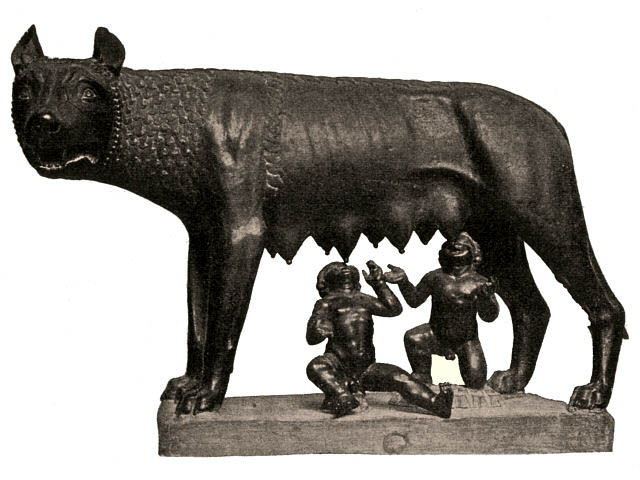 |
|
JAN 25 |
26 (= 90 - 64) |
27 (393 = 366 + 27) |
(*378 - *64 = *314) |
29 |
30 (460 - 64 = 396) |
|
DEC 1 |
2 (336) |
3 |
4 (*314 - *56 = *258) |
5 |
6 (*260 = *380 - *120) |
|
JUNE 7 (*88) |
8 |
9 |
10 (161 = 241 - 80) |
11 |
12 (*140 - *57) |
|
AUG 3 |
4 (216) |
5 |
6 |
7 |
8 (*140) |
 |
 |
 |
 |
 |
 |
|
*Ca14-18 |
*Ca14-19 |
*Ca14-20 (383) |
(378 + 6) |
*Ca14-22 |
*Ca14-23 |
|
CLOSE TO THE SUN: |
|
AL DAFĪRAH (Tuft) = β Com. Ber.
(199.4) |
σ Virginis (200.4)
*159.0 = *200.4 - *41.4 |
γ Hydrae (201.0), ι Centauri (201.4) |
Al Simāk-12 (Lofty) /
Chitra-14 (Bright One) /
Horn-1 (Crocodile) /
Sa-Sha-Shirū-20
(Virgin's Girdle) /
ANA-ROTO-3 (Middle pillar)
MIZAR =
ζ
Ursae Majoris (202.4), SPICA =
α
Virginis, ALCOR = 80 Ursae Majoris
(202.7)
SADALMELIK (α Aquarii)
*161.0 = *202.4 - 41.4 |
71 VIRGINIS
(203.6) |
no star listed (204) |
|
6 (461 - 182 = 279) |
7 (*200) |
8 |
Oct 9 (282) |
10 |
11 (284) |
|
"Aug 26 |
27 |
28 (*160) |
29 (241 = 282 - 41) |
30 |
31 (9 * 27) |
|
CLOSE TO THE FULL MOON: |
|
(86 + 375 = 461) |
(462 - 366 = 96) |
April 7 |
8 (464 = 16 * 29) |
9 |
10 (100) |
|
"Terminalia |
"Bissextum |
"Febr 25 |
26 (464 - 42 = 422) |
27 (423 - 365 = 58) |
28 (59 = 2 * 29½) |
|
... The
leap day was introduced as part of the
Julian reform. The day following the
Terminalia (February 23) was doubled,
forming the 'bis sextum -
literally 'double sixth', since February
24 was 'the sixth day before the Kalends
of March' using Roman inclusive counting
(March 1 was the 'first day'). Although
exceptions exist, the first day of the
bis sextum (February 24) was
usually regarded as the intercalated or
'bissextile' day since the third
century. February 29 came to be regarded
as the leap day when the Roman system of
numbering days was replaced by
sequential numbering in the late Middle
Ages ... |
|
1h (15.2)
β Phoenicis (15.1), υ Phoenicis, ι
Tucanae (15.6), η Ceti, ζ Phoenicis
(15.7) |
Al Batn Al Hūt-26 (Belly of the Fish) /
Revati-28 (Prosperous) /
1-iku (Field Measure)
MIRACH (Girdle) = β Andromedae, KEUN MAN
MUN (Camp's South Gate) = φ Andromedae
(16.0),
ANUNITUM = τ Piscium
(16.5),
REVATI (Abundant) = ζ Piscium
(16.9)
REGULUS
(α Leonis) |
ν Phoenicis (17.4), κ Tucanae (17.6)
*342 = *383.4 - *41.4 = 421 - 80 + 1 |
no star listed (18) |
ADHIL (Garment's Train) = ξ Andromedae
(19.3), θ Ceti (19.7) |
KSORA (Knee) = δ Cassiopeiae
(20.1), ω Andromedae (20.6), γ Phoenicis
(20.8) |
|
JAN 31 |
FEBR 1 |
2 (*319 = *383 - *64) |
3 (*320 = 400 - 80) |
4 |
5 (36) |
|
DEC 7 |
8 |
9 |
10 (161 + 183) |
11 |
12 (*266) |
Now then, by counting 78 right
ascension days ahead from April 8 (464) - when
Spica was at Hotu - we will reach glyph
number 384 + 78 = 462:
| 74 |
25 (163 + 75 = 238) |
AUG 26 |
27 (240 = 281 - 41) |
28 (*161) |
29 (242 = 2 * 121) |
| 22 (220 + 75 = 10 * 29½) |
OCT 23 |
24 |
25 (*218 = *161 + *57) |
26 |
 |
 |
 |
 |
 |
| Cb3-20 (461) |
Cb3-21 (384 + 78) |
Cb3-22 |
Cb4-1 (392 + 72) |
Cb4-2 |
| kiore - henua |
manu rere i te taketake |
te henua - mau i te taketake |
manu rere |
kiore - henua |
|
... The specific epithet taketake
is Māori for long established, ancient,
or original ... |
|
CLOSE TO THE SUN: |
|
KAUS BOREALIS = λ Sagittarii (279.3) |
ν Pavonis (280.4), κ Cor. Austr. (280.9) *239 = *280.4 - *41.4 |
Abhijit-22 (Victorious)
θ Cor. Austr. (281.0), VEGA = α Lyrae (281.8) |
no star listed (282) |
ζ Pavonis (283.4), λ Cor. Austr. (283.6), DOUBLE DOUBLE = ε Lyrae (283.7), ζ Lyrae (283.8)
*242 = *283.4 - *41.4 |
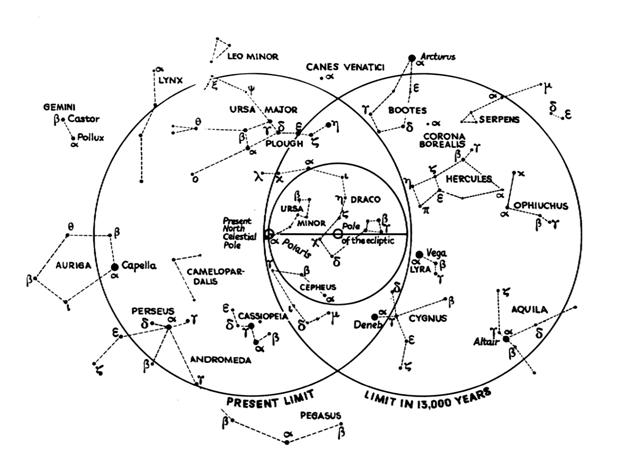 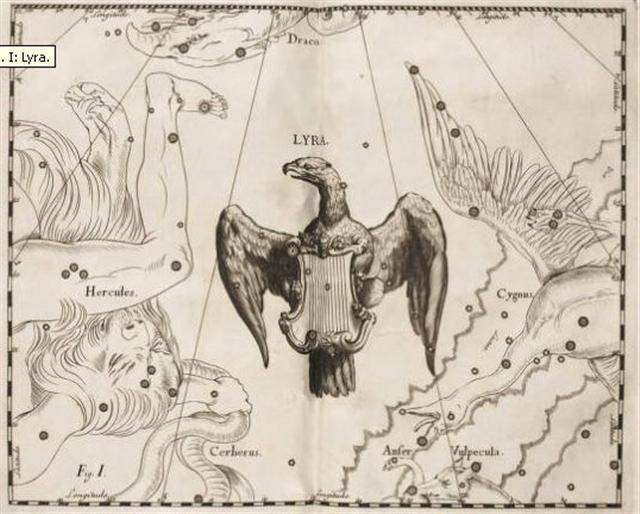
|
| Dec 25 |
26 (360) |
27 |
28 |
29 |
| SOLSTICE |
°Dec 22 (356) |
23 (*277) |
CHRISTMAS EVE |
25 |
| 'Nov 28 |
29 (360 - 27 = 333) |
30 (320 + 14) |
'Dec 1 |
2 (*256 = 16 * 16) |
| "Oct 14 |
15 |
16 (320 = 357 - 27) |
17 |
18 (*242 = 2 * 121) |
|
CLOSE TO THE FULL MOON: |
| ST JOHN'S DAY |
June 25 |
26 (177 = 6 * 29½) |
27 |
28 (*99) |
| "May 14 (59 + 75) |
15 |
16 (136 = 272 / 2) |
17 |
18 (*58) |
|
Well-22 (Tapir) / Arkū-sha-pu-u-mash-mashu-8 (Back of the Mouth of the Twins)
δ Columbae (95.2), TEJAT POSTERIOR = μ Gemini, MIRZAM (The Roarer) = β Canis Majoris (95.4), CANOPUS (Canopy) = α Carinae (95.6), ε Monocerotis (95.7), ψ1 Aurigae (95.9)
*54 = *95.4 - *41.4 |
no star listed (96) |
β Monocerotis, ν Gemini (97.0) |
no star listed (98) |
ν Puppis (99.2), ψ3 Aurigae (99.4), ψ2 Aurigae (99.5)
*58 = *99.4 - *41.4
GEMMA (α Cor. Bor.)
|
 ... The Pythagoreans make Phaeton fall into Eridanus, burning part of its water, and glowing still at the time when the Argonauts passed by. Ovid stated that since the fall the Nile hides its sources. Rigveda 9.73.3 says that the Great Varuna has hidden the ocean. The Mahabharata tells in its own style why the 'heavenly Ganga' had to be brought down. At the end of the Golden Age (Krita Yuga) a class of Asura who had fought against the 'gods' hid themselves in the ocean where the gods could not reach them, and planned to overthrow the government. So the gods implored Agastya (Canopus, alpha Carinae = Eridu) for help. The great Rishi did as he was bidden, drank up the water of the ocean, and thus laid bare the enemies, who were then slain by the gods. But now, there was no ocean anymore! Implored by the gods to fill the sea again, the Holy One replied: 'That water in sooth hath been digested by me. Some other expedient, therefore, must be thought of by you, if ye desire to make endeavour to fill the ocean ... ... Canopy ... covering over a throne, etc. XIV (Wycl.). Late ME. canope, canape - medL. canopeum baldacchino, for L. cōnōpēum, -eum, -ium net over a bed, pavilion - Gr. kōnōpeîon Egyptian bed with mosquito curtains, f. kōnōps gnat, mosquito ... |
|
... In other words, the ancient Druidic religion based on the oak-cult will be swept away by Christianity and the door - the god Llyr - will languish forgotten in the Castle of Arianrhod, the Corona Borealis. This helps us to understand the relationship at Rome of Janus and the White Goddess Cardea who is ... the Goddess of Hinges who came to Rome from Alba Longa. She was the hinge on which the year swung - the ancient Latin, not the Etruscan year - and her importance as such is recorded in the Latin adjective cardinalis - as we say in English 'of cardinal importance - which was also applied to the four main winds; for winds were considered as under the sole direction of the Great Goddess until Classical times ... |
| 21 (36 + 75 = 111) |
APRIL 22 |
23 (177 - 64 = 113) |
24 |
25 (*35) |
| 25 (*341 = *266 + *75) |
26 (*96 + *246 = *342) |
FEBR 27 (464 / 8) → π |
28 (59 = 80 - 21) |
MARCH 1 (242 - 182) |
|

















